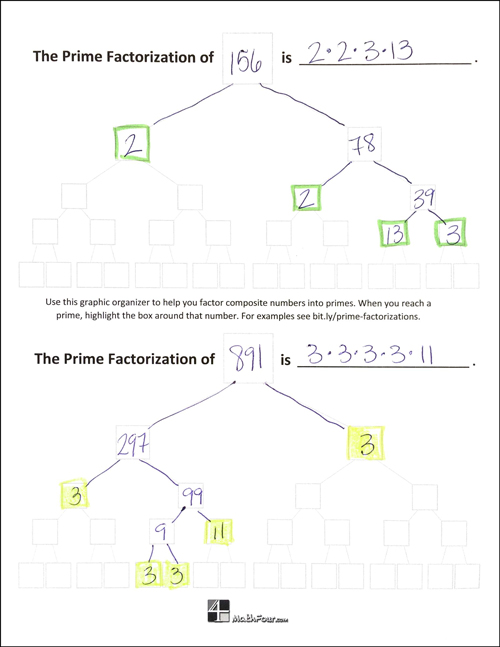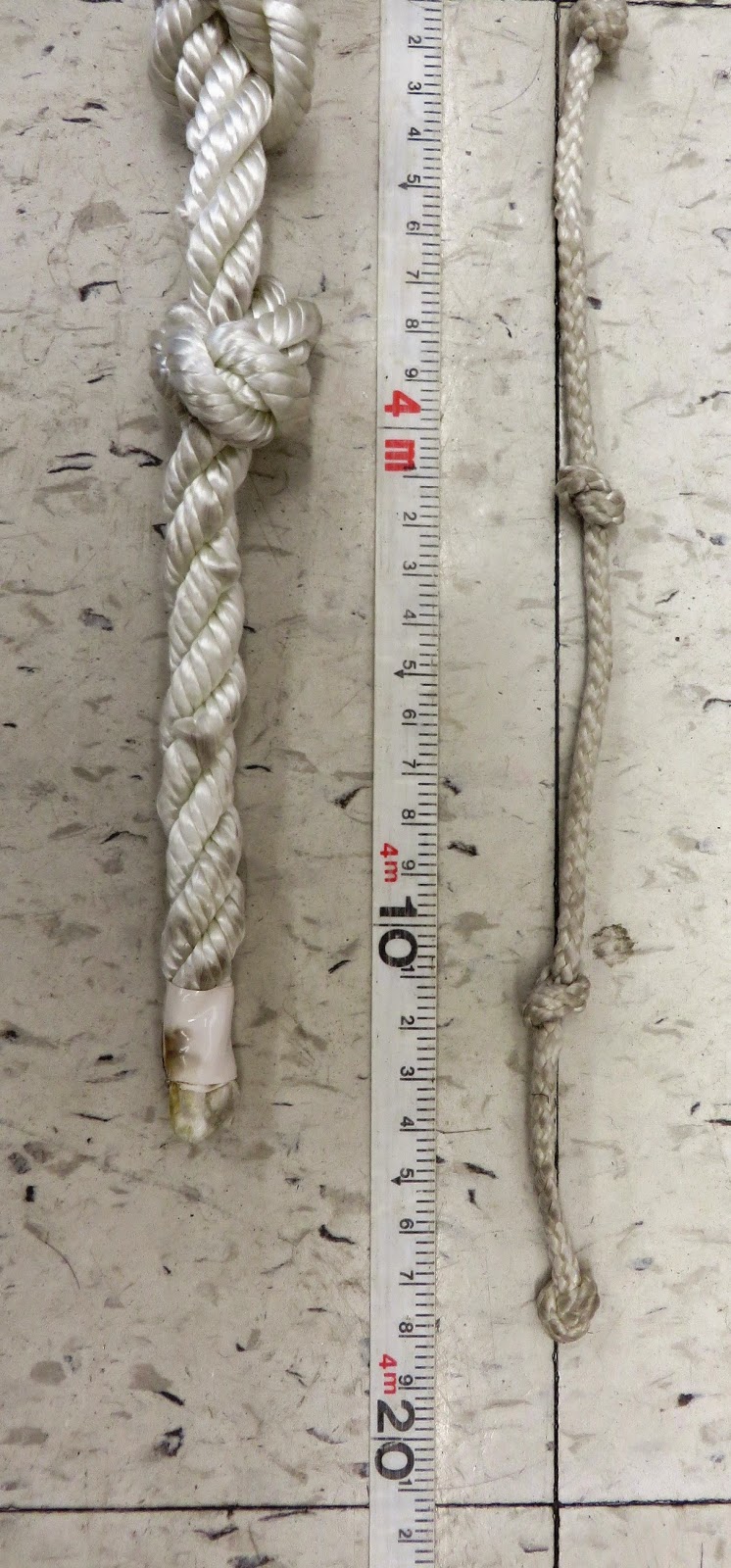Curriculum Tags: All
http://squarerootofnegativeoneteachmath.blogspot.ca/2015/02/giving-immediate-feedback-without.html
 I like graphic organizers. And although there isn't just one way to attain prime factorization, this graphic organizer can help when students do.
I like graphic organizers. And although there isn't just one way to attain prime factorization, this graphic organizer can help when students do.Curriculum Tags: Gr7, Gr8
http://mathfour.com/arithmetic/prime-factorization-graphic-organizer
 I like this activity from SlamDunk Math. They spend a lot of time attacking the curriculum from many angles and repeatedly throughout the year (they call this spiralling through the curriculum). I used to do something just like it to talk about linear relations and modelling. And here is the results of their activity. In this activity the point is to try to determine how much rope is needed to tie a knot (or conversely how does the length of the rope change with every knot tied?). That is, as you continue to tie knots in a rope, that rope becomes shorter. So you collect data about the number of knots and the length of the rope. Then repeat with a different thickness of rope. Check out their data at their site. The last time I did this it was with my MAP4C class. You can see my data set here. Update March 6th. Jon Orr has put his spin on it. Check it out at this link here
I like this activity from SlamDunk Math. They spend a lot of time attacking the curriculum from many angles and repeatedly throughout the year (they call this spiralling through the curriculum). I used to do something just like it to talk about linear relations and modelling. And here is the results of their activity. In this activity the point is to try to determine how much rope is needed to tie a knot (or conversely how does the length of the rope change with every knot tied?). That is, as you continue to tie knots in a rope, that rope becomes shorter. So you collect data about the number of knots and the length of the rope. Then repeat with a different thickness of rope. Check out their data at their site. The last time I did this it was with my MAP4C class. You can see my data set here. Update March 6th. Jon Orr has put his spin on it. Check it out at this link hereCurriculum Tags: MPM1D, MFM1P, MFM2P, MAP4C, MDM4U
http://slamdunkmath.blogspot.ca/2015/02/ropes-of-different-thickness-and-equal.html
I was actually surprised a bit by this activity in that my first instinct was to say that the relationship would be non linear. Spoiler alert. It's linear (when I thought about it, it made sense). The relationship in question is the connection between the side length of of a square and it's diagonal. Check out the video and all handouts at the Tap Into Teen Minds blog.
Curriculum Tags: MPM1D, MFM1P, MFM2P, MAP4C, MDM4U
https://tapintoteenminds.com/2015/02/19/connecting-relationships-multiple-strands/
Animated Gifs are pretty popular on the web. And IFL Science had a post on some animated gifs relating to math. Some of them are good others, not. Some of them fit Ontario curriculum, others not. There are 21 all together. Check them out at this link but here are a couple to get you started.
Curriculum Tags: Gr8, MFM1D, MFM1P, MCR3U, MDM4U
http://www.iflscience.com/brain/math-gifs-will-help-you-understand-these-concepts-better-your-teacher-ever-did







No comments:
Post a Comment